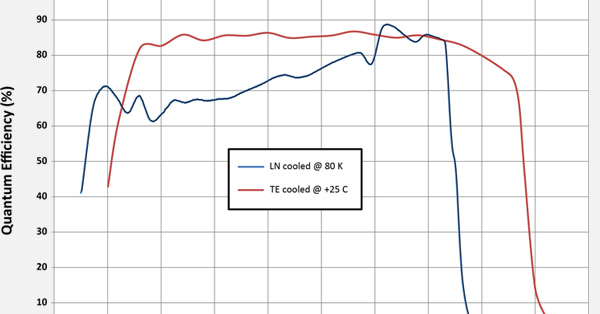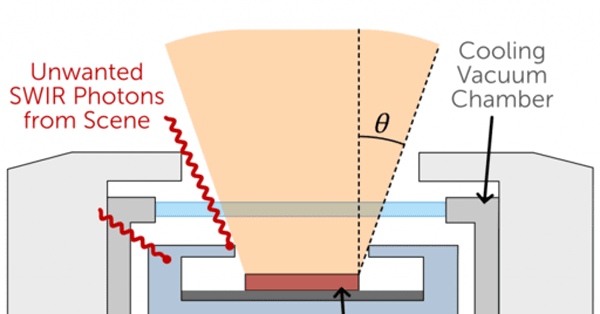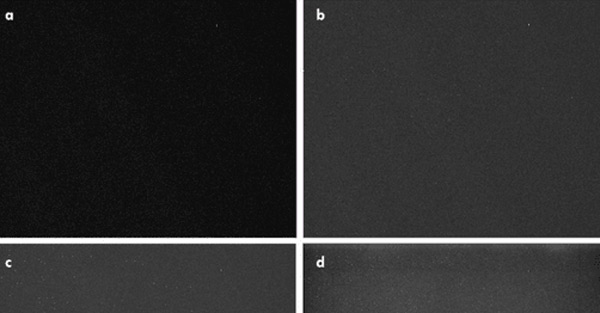Thermal Management: How NIRvana Cameras Keep Their Cool
Introduction
With infrared imaging in the SWIR (Short Wave InfraRed) band from 900nm to 1700nm wavelength, there are unique imaging capabilities. From cutting-edge in vivo investigations to nanotechnology, demanding scientific applications are hugely diverse and growing. However, there are also unique challenges to overcome.
The InGaAs sensors that are sensitive to this wavelength range are inherently noisier than the silicon-based visible light imaging cameras we may be accustomed to. The most challenging noise source for low light imaging is the thermal noise of dark current. Additionally though, infrared radiation is of course also a form of heat exchange, so the presence of hot areas in or around the camera can also contribute unwanted infrared background light.
The solution to both of these challenges is sensor cooling, achieved through carefully designed thermal management. There is more to this story than simply achieving a low target sensor temperature, however. The stability of the temperature achieved over time will play a major role in image quality and noise performance.
To achieve deep cooling without condensation, the sensor must be kept in vacuum chamber. The quality of that vacuum seal is a vital determining factor of camera longevity. In addition, we must protect the sensor through cold shielding, ensuring that heat removed from the sensor into the surrounding camera body does not then produce infrared photons detected by the camera.
In this document, these vital aspects of scientific camera performance will be explored, as will the industry-leading thermal management performance of the NIRvana range of InGaAs SWIR cameras.
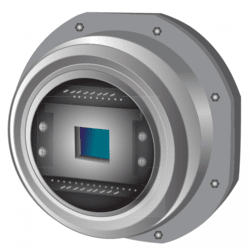
Staying At Temperature
Temperature stability is as vital as the absolute temperature achieved for scientific imaging. There are two important factors at play here: dark current intensity, and dark current noise.
Dark current is exposure-time-dependent thermal noise that builds up in pixels. Since the sensor materials have thermal energy, there is a chance of electrons jumping out of the substrate and into a pixel, as if they were detected photoelectrons. This raises the baseline intensity level that the pixel outputs. So, to measure a quantifiable signal, it is standard practice to subtract a 'dark frame' with no detected photons from any images acquired. This frame must have the same exposure time and sensor temperature, and hence same dark current intensity, as the experiment frames. This dark frame is typically acquired just before acquisition.
However, in the case of a camera where sensor temperature is not well maintained over the duration of an experiment, a rise in temperature will lead to a rise in this dark current intensity. Without the regular acquisition of dark frames, adding massively to the complexity and duration of an experiment, this rise in background intensity will transfer over to acquired images, meaning quantifiable values can no longer be relied upon.
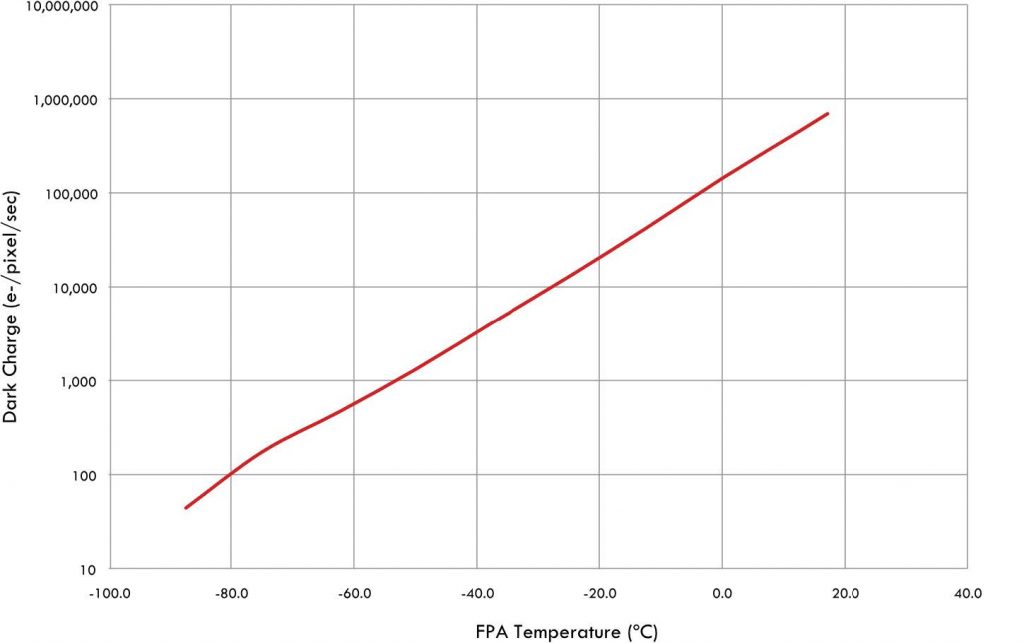
temperature target. As is evident from the log scale of the y axis, small variations in
temperature can lead to very large variations in background dark count.
The other aspect of dark current is noise. Dark current electrons do not accumulate uniformly and metronomically over time - although we can describe an average dark current response per unit time, the actual events of electrons entering the pixel are random. This statistical behavior is known as a Poisson distribution. The variation in dark current from one measurement to the next, i.e. the noise, will be given by the square root of the number of captured dark current electrons.
Should the temperature increase compared to the intended target temperature, dark current noise also increases. The performance of the camera as expected from the specification sheet is then not maintained.
Through engineering expertise, research and decades of experience, the thermal management of the NIRvana range of infrared cameras is second to none. As a result, the NIRvana range lead the industry in both their low dark current values, and the stability with which this cooling is maintained. This is vital for any form of quantitative imaging.
Not All Vacuum Chambers Are Equal
When air encounters a cold surface, condensation will form. Camera sensors are frequently thermo-electrically cooled to sub-zero temperatures. So how is condensation prevented from forming on sensitive components such as the sensor surface?
Cooled camera sensors are isolated from the surrounding atmosphere inside purpose-built chambers to provide both thermal insulation from the surrounding atmosphere and protection from condensation. The method of this isolation varies between camera manufacturers.
One common method is so-called 'backfilling', where an airtight chamber is formed around the sensor filled with an inert gas such as argon. Although cost-effective, this method is not ideal for deep-cooled cameras as there will be some convective heat transfer from the sensor to the chamber walls, meaning less effective removal heat from the sensor. Further, the seals used cannot be perfect, and over a number of years condensation will eventually get in.
An alternative is to produce a vacuum in the sensor chamber. This vastly reduces the convective heat transfer within the chamber, so permits better thermal management of the sensor. However, there are different methods to contain the vacuum with very different reliability and longevity against condensation. One method used by many manufacturers is to use a chamber where the sensor window (the glass covering the front of the chamber where light comes in) is affixed to the rest of the chamber with specialist epoxy.

While this is the more cost-effective vacuum sealing method, the reliability of the seal formed could be considered worse than even the back-filled case discussed above, with seal lifetimes being more variable. What's more, epoxy seals are not hermetic, meaning quantities of air and moisture will slowly permeate through the seal. This means such vacuum chambers require maintenance and have much reduced service lifetime.
The solution to these issues is to use an all-metal hermetically sealed vacuum chamber. All cameras in the NIRvana range feature this technology, which Teledyne Princeton Instruments has perfected. Although this requires more engineering, the result is a permanent seal that does not suffer from air or condensation ingress, offers true maintenance-free operation, the longest service lifetimes, and allows the best thermal performance.
Deep Thermoelectric Cooling with NIRvana 640 and NIRvana HS
Thermoelectric cooling is the use of a Peltier plate attached to the back of the camera sensor to actively remove heat and control temperature. While this is a commonly used technique in camera cooling, what happens to the heat after it is removed from the sensor is all-important in InGaAs cooling. The NIRvana 640 and NIRvana HS cameras are specifically designed to keep heat away from the sensor through every aspect of their design. From the size and geometry of the camera, to the location of the camera electronic boards, everything is engineered to produce world-leading thermal performance.
This thermal management is not just aiming to reduce dark current. It is also vital because hot camera components produce SWIR photons. The NIRvana camera range all include 'cold shielding' , which blocks heat from both the camera electronics and the surrounding environment from reaching the sensor and being detected as additional noisy background signal. Features like this are absolutely key for low light scientific imaging.
Going Lower with the NIRvana LN
The NIRvana 640 is already world-leading in its low dark current, but some cutting-edge applications require us to go even further. The NIRvana LN uses liquid nitrogen to cool its sensor, providing the lowest dark current values for scientific InGaAs in the world. As a result, sensitivity to low light signals is unsurpassed, and exposure times of over an hour are within reach.
Summary
Dark current noise if frequently the most significant barrier standing in the way of low-light scientific imaging. However, as this document has explored, there is more to schientific-quality SWIR cameras than a low temperature number. The stability of that temperature is also critical, as is the management of thermal photons from the camera housing and surrounding environment.
Through leveraging 40 years of experience in world-leading cooling design, the NIRvana range of cameras from Teledyne Princeton Instruments provides both the lowest and the most stable dark current performance in the world. Through this, scientists are able to image low light samples with a greater signal to noise ratio than ever before.
